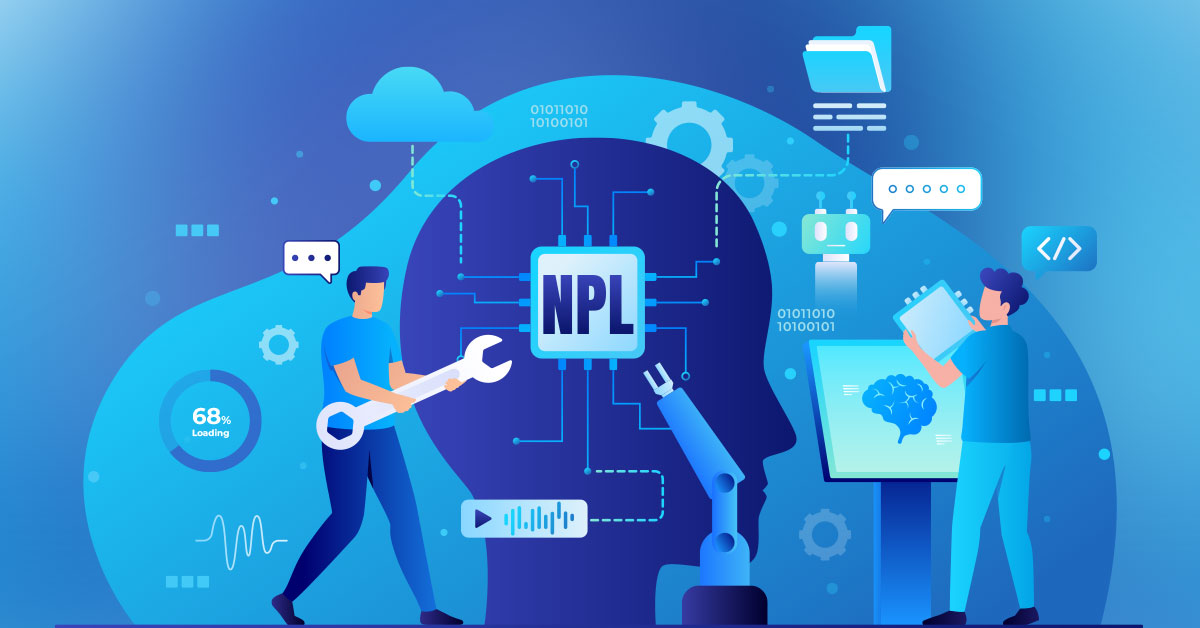Conversational Intelligence: A Deep Dive into the World of AI-Powered Answer Engines

5 min read
Conversational AI has emerged as a key technology that is fundamentally changing the way we interact with the digital world, as digital interactions have become the norm. Artificial intelligence (AI)-driven technologies are revolutionizing information processing and communication between businesses and consumers, in addition to enhancing human capabilities. The AI-powered conversation engine, which combines natural language processing, machine learning, and data analytics to replicate human-like conversations and offer accurate responses, is at the centre of this transformation.
What is Conversational AI?
Conversational AI is the application of AI technologies, such as chatbots and virtual assistants, to help computers comprehend, process, and react to human language naturally and intuitively. It takes more than simply word and phrase interpretation to understand the meaning and flow of the discussion. Digital interactions can now be more dynamic, personalized, and human-like through these capabilities.
The Mechanics of AI-Powered Conversation Engines
AI-powered conversation engines operate on the basis of a complicated interplay between a number of advanced technologies. Conversational Intelligence systems provide smooth and natural-feeling interactions to users because of these engines. Below is a more thorough examination of their main elements and features:
-
Natural Language Processing (NLP)
NLP is the foundational technology that enables machines to understand and interpret human language. It involves breaking down language into shorter, elemental pieces, understanding the relationships between these pieces, and how these relationships convey meaning. NLP technologies parse syntax, interpret semantics and analyze the context to derive meaning from text or spoken words. This understanding is important for the system to process user queries and generate relevant responses.
-
Deep Learning and Machine Learning (ML)
Deep learning, which makes use of neural networks, is a key component of machine learning and is responsible for allowing conversation engines to grow and learn from their interactions over time. To understand linguistic patterns, idioms, and colloquialisms, these systems are trained on enormous datasets, including transcripts of real conversations. By means of ongoing education, the engine gains proficiency in anticipating suitable reactions, managing a wider range of inquiries, and even navigating intricate or subtle dialogues.
-
Data Analytics and Contextual Understanding
In order to deliver responses that are pertinent to the context, conversation engines are outfitted with sophisticated data analytics capabilities. They examine the question itself as well as the environment in which it is posed. It could include the user’s past interactions, the circumstances of the moment, or particular individual information. The engine may respond with greater accuracy, personalization, and situational appropriateness when it understand the context.
-
Dialogue Management
The component in charge of controlling the conversation’s flow is called dialogue management. When to ask for further information and how to react to user input are decided by it. When it comes to answering questions, completing transactions, or providing assistance, dialogue management makes sure that the discussion stays on topic and cohesive, directing the exchange in the direction of a positive result.
-
Integration with External Systems and APIs
To enhance functionality and provide accurate information, conversation engines often integrate with external systems and APIs. For example, in order to properly respond to questions, a chatbot within a banking application might access account information or transaction history. Richer and more informative interactions are made possible through integration with databases, CRM systems, and other enterprise systems.
-
Speech Recognition and Generation
These two crucial elements are necessary for voice-based systems. Speech generation is the act of turning written replies from the system into spoken words, whereas speech recognition turns spoken words into text that the system can process. The naturalness and fluidity of voice interactions have greatly enhanced as a result of developments in these fields.
-
Security and Privacy
Ensuring conversation engines process data securely and privately is critical. It entails putting in place strong data protection procedures, making sure privacy laws and regulations are followed, and preserving user confidence by protecting sensitive data.
What are the Applications in Various Sectors

The fact that conversational AI is being used in so many different areas is evidence of its adaptability and revolutionary potential. Chatbots and virtual assistants, which are AI-powered technologies that handle large volumes of consumer queries and provide timely and correct responses, are redefining customer service interactions and improving both operational efficiency and customer pleasure. These systems improve patient access and healthcare delivery by streamlining patient management procedures in the healthcare industry. They help with duties like appointment scheduling and first medical advice. It has brought about a big change in the banking industry by personalizing financial services, handling transactions, and enhancing security with sophisticated fraud detection tools. It is changing the way people shop in retail and online by helping them find products, making tailored recommendations, and answering their questions after they’ve made a purchase.
The technology can also be used in education, where it can provide personalized instruction and language practice, improving the quality of education.
AI-powered solutions improve customer service in the travel and hospitality sectors by helping with reservations, providing travel advice, and tailoring suggestions. All of which improve the quality of the travel experience in general, with conversational intelligence managing the first phases of recruiting and enhancing the applicant experience. The human resources industry gains from expedited hiring and onboarding procedures. In order to improve the driving experience, even the car sector is utilizing this technology in vehicle interfaces for hands-free operation and real-time support. These diverse uses demonstrate the broad and expanding influence of conversational artificial intelligence. Which is fostering efficiency and creativity in a wide range of industries.
Challenges and Future Directions
Conversational AI has come a long way, but there are still many unanswered questions in the field. Dealing with the enormous diversity of human language-which includes a vast range of accents, dialects, and colloquial terms-is one of the biggest obstacles. Because less typical speech patterns are difficult for AI systems to effectively interpret and process, this linguistic variability presents a substantial challenge. Another important area where interactive AI falls short is emotional intelligence. One of the more difficult and underdeveloped areas of artificial intelligence is the detection and appropriate response to human emotions via text or voice. This constraint hinders these systems’ capacity to have meaningfully sympathetic and contextually informed dialogues.
Security and privacy in AI-powered interactions are equally important issues. Since sensitive personal data is frequently handled by these systems, protecting against breaches and guaranteeing data privacy are essential for upholding user confidence and adhering to legal requirements.
With a number of developments, virtual assistance is expected to overcome these obstacles in the future. It is anticipated that advances in emotional AI will raise the emotional intelligence of AI systems, enabling more complex and empathic interactions. Another area of focus is enhanced multilingual support, which aims to increase the comprehension of various languages and dialects. AI systems will soon be able to comprehend human discourse more intricately thanks to the development of a more advanced contextual understanding.
More immersive and interactive user experiences are predicted when conversational AI is combined with advanced technologies like the Internet of Things (IoT) and augmented reality (AR). These integrations could increase conversational AI’s potential and improve the versatility and engagement of interactions.
Conclusion
A major change in human-machine interaction is represented by conversational AI, which is more than just a technological advance. A wide range of industries, including customer service, healthcare, banking, and more, are already being revolutionized by AI-powered conversation engines. They are improving user experiences and increasing operational efficiency. More meaningful, effective, and nuanced interactions could result from this technology as it develops and overcomes its present shortcomings. Not only is this transformation changing the way we communicate digitally. But it is also radically changing the way we engage with the digital world and trade information. Therefore, conversational AI is leading the way towards a future in which human and machine communication is more seamlessly interwoven and natural than ever before, leading in a new era in technology contact.
Published: January 24th, 2024





